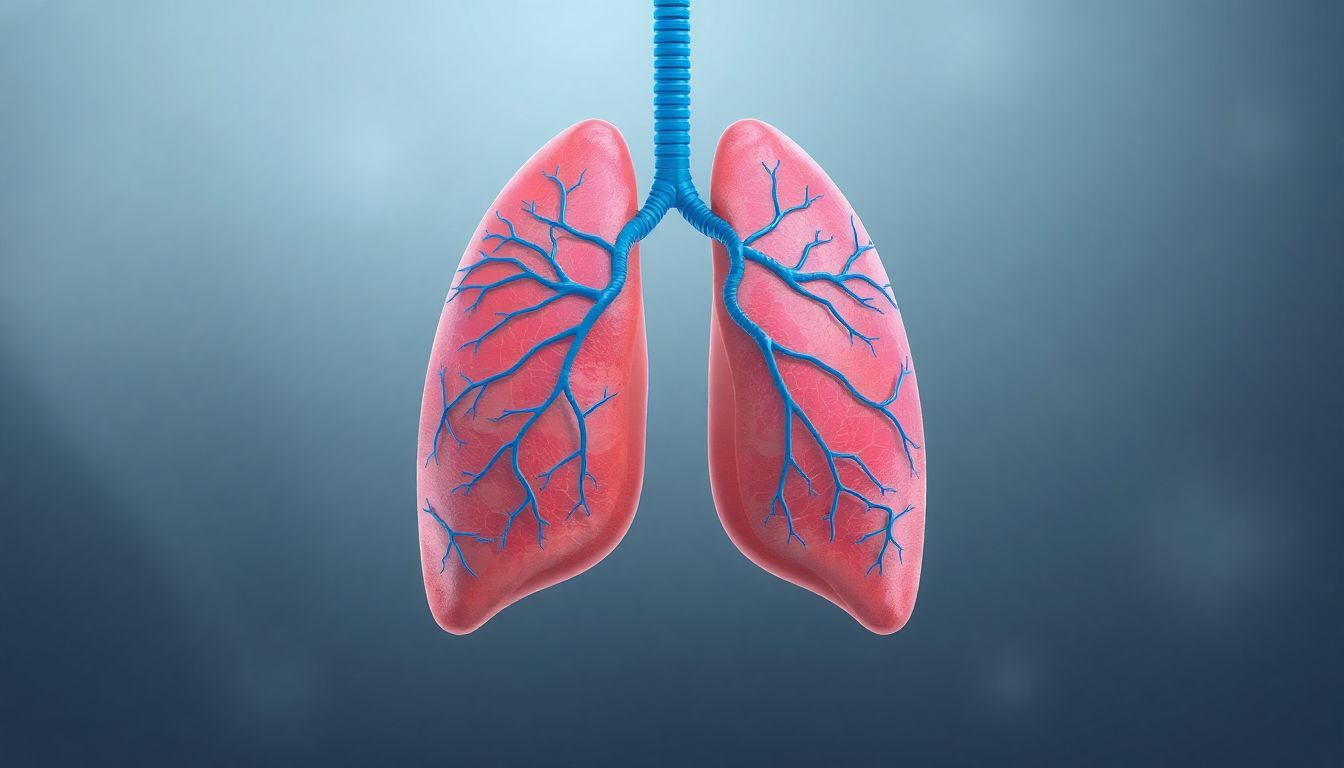While most people focus on their lungs when dealing with breathing issues, there’s a hidden hero working behind the scenes: your lymphatic system. This sophisticated drainage network is your body’s natural detoxification system, and when it comes to lung health, it plays a crucial role that’s often overlooked.
Think of your lymphatic system as the street sweeper of your body—constantly cleaning up waste, toxins, and excess fluid from your tissues. For your lungs, this means clearing out inflammatory debris, environmental particles, and cellular waste that can accumulate and compromise your breathing.
The Lymph-Lung Connection: Your Built-In Cleaning Crew
Your lungs are surrounded by an extensive network of lymphatic vessels that perform several vital functions:
1. Waste Removal from Lung Tissue
Every day, your lungs encounter pollutants, allergens, and cellular byproducts. Your lymphatic system acts as the cleanup crew, carrying these substances away to be filtered and eliminated.
2. Immune Surveillance
Lymph nodes positioned around your lungs and airways act as security checkpoints, identifying and neutralizing pathogens before they can cause serious damage.
3. Fluid Balance Maintenance
The lymphatic system prevents fluid from accumulating in the delicate lung tissue, which is essential for maintaining efficient oxygen exchange.
When this system becomes sluggish or overwhelmed—often due to poor circulation, dehydration, or chronic inflammation—waste products build up, creating the perfect environment for respiratory issues to develop and persist.
5 Signs Your Lymphatic System Needs Support
How do you know if your lymphatic drainage might be compromised? Watch for these indicators:
- Persistent Swelling in hands, feet, or around the eyes
- Frequent Respiratory Infections that take longer to clear
- Constant Feeling of Congestion despite minimal mucus production
- Skin Issues like dryness, itching, or slow healing
- General Fatigue and brain fog that doesn’t improve with rest
If you’re experiencing these along with breathing issues, your lymphatic system might be asking for help. This often overlaps with symptoms we discuss in our guide to 5 Hidden Signs Your Lungs Are Clogged With Mucus.
7 Ways to Activate Your Lymphatic System for Better Breathing
The good news is that you can actively support your lymphatic function with simple, daily practices. Unlike your circulatory system, your lymphatic system doesn’t have a pump—it relies on muscle movement and breathing to keep fluid moving.
1. Diaphragmatic Breathing: The Natural Lymph Pump
Your diaphragm’s movement during deep breathing creates pressure changes that directly stimulate lymphatic flow around your lungs.
- How to do it: Practice Diaphragmatic Breathing: The #1 Exercise to Strengthen Your Lungs for 5 minutes daily
- Why it works: Each deep breath acts like a pump, moving lymph fluid through the vessels surrounding your lungs
2. Rebounding: The Ultimate Lymphatic Exercise
Gentle bouncing on a mini-trampoline is one of the most effective ways to stimulate lymphatic flow throughout your entire body.
- How to do it: 5-10 minutes of gentle bouncing daily
- Why it works: The up-and-down motion creates gravitational changes that open and close lymphatic valves, propelling fluid forward
3. Dry Brushing: Wake Up Your Circulation
Brushing your skin toward your heart with a natural bristle brush can significantly improve lymphatic circulation.
- How to do it: Before showering, use long strokes toward your heart, focusing on limbs and torso
- Why it works: Stimulates lymphatic vessels just under the skin’s surface
4. Hydration with Lemon Water
Your lymphatic system is primarily composed of water, and proper hydration is essential for optimal flow.
- How to do it: Start your day with warm lemon water
- Why it works: Lemon helps alkalize your body while providing vitamin C to support lymphatic function
5. Specific Yoga Poses for Lymphatic Drainage
Certain yoga positions are particularly effective for encouraging lymphatic flow around the chest and lungs.
- Best poses: Incorporate poses from our Best Yoga Poses for Lung Capacity and Chest Opening guide
- Why it works: Inversions and twists create pressure changes that move lymphatic fluid
6. Manual Lymphatic Drainage Massage
Gentle, rhythmic massage techniques can directly stimulate lymphatic flow in the chest and neck areas.
- How to do it: Use light pressure in circular motions around collarbones and underarms
- Why it works: Directly encourages lymph movement in key drainage areas
7. Anti-Inflammatory Nutrition
Chronic inflammation can overwhelm your lymphatic system. Supporting it with the right foods makes its job easier.
- Focus on: Foods from The Lungs’ Best Friends: Top 5 Anti-Inflammatory Foods
- Why it works: Reduces the inflammatory load your lymphatic system must process
The Gut-Lymph Connection You Need to Know
Interestingly, your gut health directly impacts your lymphatic system. The gut-associated lymphoid tissue (GALT) is your largest immune organ, and when gut inflammation occurs, it can overwhelm your entire lymphatic network.
This connection explains why digestive issues often coincide with respiratory problems. As we explore in The Gut-Lung Axis: How Your Microbiome Controls Your Breathing, supporting your gut health indirectly supports your lymphatic and respiratory systems.
When Lymphatic Support Makes the Biggest Difference
Certain conditions particularly benefit from lymphatic activation:
Post-Respiratory Infections: After colds, flu, or COVID, your lymphatic system is working overtime to clear cellular debris and inflammation. Supporting it can significantly speed up recovery, as outlined in our Post-COVID Lung Recovery: A 90-Day Plan.
Chronic Congestive Conditions: For people with COPD, asthma, or chronic bronchitis, regular lymphatic support can reduce congestion and improve breathing efficiency.
Seasonal Allergy Sufferers: When allergens overwhelm your system, supporting lymphatic drainage helps clear the inflammatory particles more efficiently.
Environmental Toxin Exposure: If you live in areas with poor air quality, regular lymphatic activation helps your body eliminate accumulated toxins.
Simple Daily Lymphatic Routine
Incorporate this 5-minute routine into your morning to keep your lymphatic system flowing smoothly:
- 1 minute: Dry brushing toward your heart
- 2 minutes: Rebounding or gentle jumping jacks
- 2 minutes: Deep diaphragmatic breathing
This quick routine can make a significant difference in how you feel throughout the day, especially if you struggle with morning congestion or stiffness.
The Bottom Line: Your Lymphatic System is Your Lung’s Best Friend
Understanding and supporting your lymphatic system transforms how you approach respiratory health. Instead of just addressing symptoms, you’re supporting the underlying drainage system that keeps your lungs clean and functional.
Remember that consistency matters more than intensity. Regular gentle support is far more effective than occasional intense interventions. Your lymphatic system responds best to daily loving attention rather than heroic occasional efforts.
By making lymphatic support part of your routine, you’re not just helping your breathing – you’re supporting your entire body’s ability to cleanse, heal, and thrive.
FAQs:
1. What is the lymphatic system and how does it relate to lung health?
The lymphatic system is your body’s drainage network that removes waste, toxins, and excess fluid from tissues. For your lungs, it clears inflammatory debris, environmental particles, and cellular waste that can accumulate and compromise breathing function.
2. How can I tell if my lymphatic system is sluggish?
Common signs include persistent swelling in hands or feet, frequent respiratory infections, constant congestion with minimal mucus, skin issues like dryness or slow healing, and general fatigue that doesn’t improve with rest.
3. What’s the best exercise for lymphatic drainage?
Rebounding (gentle bouncing on a mini-trampoline) is highly effective because the up-and-down motion creates gravitational changes that open and close lymphatic valves, propelling fluid forward throughout your entire system.
4. Can deep breathing really help my lymphatic system?
Yes, diaphragmatic breathing is crucial because your diaphragm’s movement creates pressure changes that directly stimulate lymphatic flow around your lungs, acting as a natural pump for this system.
5. How does hydration affect lymphatic function?
Your lymphatic system is primarily composed of water, so proper hydration is essential for optimal flow. Dehydration makes lymph fluid thicker and more sluggish, compromising its waste-removal capabilities.
6. Are there specific foods that support lymphatic health?
Yes, focus on anti-inflammatory foods like leafy greens, berries, and citrus fruits. These reduce the inflammatory load your lymphatic system must process, making its job easier. Avoid processed foods that create more waste.
7. How often should I practice lymphatic drainage techniques?
Daily consistency is more important than duration. Even 5-10 minutes of lymphatic stimulation daily is more effective than longer sessions done occasionally. Your lymphatic system responds best to regular, gentle support.
8. Can lymphatic drainage help with conditions like COPD or asthma?
Yes, supporting lymphatic function can reduce congestion and improve breathing efficiency in chronic respiratory conditions by helping clear inflammatory debris and excess fluid from lung tissues.
9. What’s the connection between gut health and the lymphatic system?
Your gut-associated lymphoid tissue (GALT) is your largest immune organ. When gut inflammation occurs, it can overwhelm your entire lymphatic network, which is why digestive issues often coincide with respiratory problems.
10. How long until I notice improvements from supporting my lymphatic system?
Many people notice reduced congestion and improved breathing within 1-2 weeks of consistent lymphatic support. However, significant improvements in overall respiratory function and immunity may take 4-6 weeks of regular practice.











